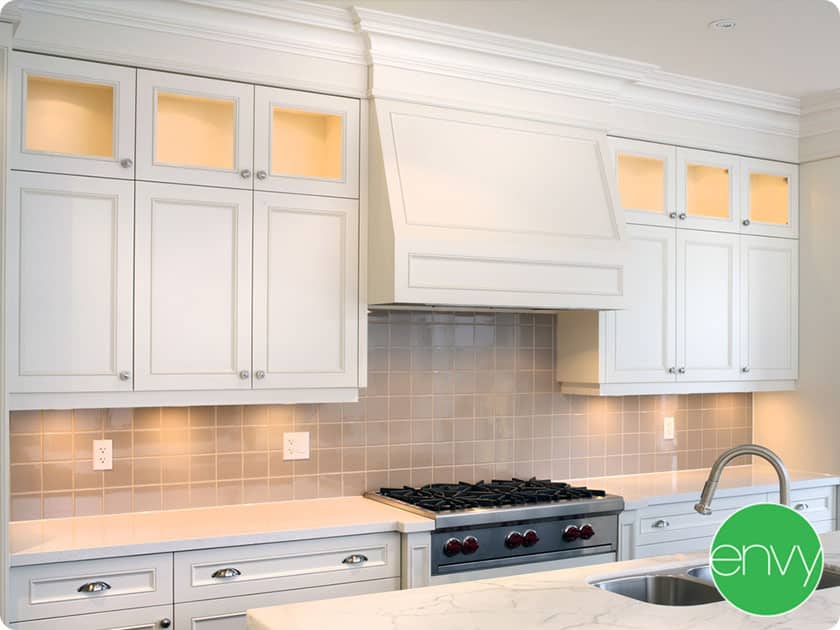Standard Space Considerations: Standard Space Between Base And Wall Cabinets

You know, in kitchen design, the space between base and wall cabinets isn’t just about aesthetics. It’s crucial for functionality and usability. Imagine having to constantly bump your head on the cabinets while trying to reach something on the countertop, or having your appliances feel cramped. Not cool, right? So, getting the spacing right is essential for a kitchen that’s both practical and stylish.
Factors Influencing Standard Space
The standard space between base and wall cabinets isn’t set in stone. It depends on a few things, like the countertop overhang, appliance clearances, and how comfortable you want the space to be.
The countertop overhang, which is the part of the countertop that extends beyond the base cabinets, needs enough space to allow for comfortable working and prevent items from falling off.
Appliance clearances are also important. You need enough space for the refrigerator door to open fully, and for the oven to vent properly.
Ergonomic considerations, such as how tall you are and how easily you want to reach things in the cabinets, play a role too.
Examples of Standard Spaces
Different kitchen layouts and styles call for different standard spaces.
For example, in a traditional kitchen, the standard space might be 18 inches. This allows for a good amount of countertop overhang and sufficient clearance for appliances.
In a contemporary kitchen, the space might be slightly smaller, around 16 inches. This creates a more streamlined look and maximizes countertop space.
The key is to find a space that works best for your needs and preferences.
Common Standard Space Ranges

You’ve got the base and wall cabinets ready, but what about that crucial space in between? It’s not just about aesthetics, fam. The right space makes all the difference in how your kitchen flows. Let’s break down the common standard space ranges and why they matter.
Standard Space Ranges
The standard space between base and wall cabinets is usually around 18 inches (45.7 cm), but it can vary depending on the kitchen design, accessibility needs, and personal preferences. Here’s a breakdown of the typical space ranges and their pros and cons:
| Space Range | Recommended Applications | Considerations |
|---|---|---|
| 18 inches (45.7 cm) | Standard kitchen layouts, comfortable for most people | Provides adequate space for countertops and backsplashes, but may be cramped for people with mobility issues. |
| 20-24 inches (50.8-61 cm) | Larger kitchens, kitchens with accessibility features, kitchens with a lot of counter space | More space for countertop appliances and food preparation, but may make the kitchen feel less cohesive. |
| 15-17 inches (38.1-43.2 cm) | Small kitchens, kitchens with limited counter space | Saves space and makes the kitchen feel more compact, but may limit countertop space and accessibility. |
Remember, the ideal space range is subjective and depends on your specific needs and preferences.
Designing for Optimal Space

Determining the ideal space between base and wall cabinets is crucial for a functional and aesthetically pleasing kitchen. This space, often referred to as the “upper cabinet clearance,” affects everything from ease of movement to the overall visual balance of the room.
Measuring Existing Spaces, Standard space between base and wall cabinets
Measuring existing spaces is the first step in determining the ideal space between base and wall cabinets. This involves carefully measuring the distance between the countertop and the bottom of the wall cabinets, taking into account any existing backsplash and countertop overhang.
- Backsplash Thickness: Measure the thickness of the backsplash, as this will impact the overall height of the upper cabinets. A thicker backsplash will require a greater distance between the base and wall cabinets.
- Countertop Overhang: Measure the overhang of the countertop, as this will affect the available space below the wall cabinets. A larger overhang will require a greater distance between the base and wall cabinets.
The standard space between base and wall cabinets, typically 18 inches, allows for adequate clearance and functionality. When designing a kitchen, incorporating a systembuild callahan wall cabinet can offer a unique storage solution. These cabinets often have adjustable shelves, making them ideal for various kitchen items, and their sleek design can complement any style.
Maintaining the standard space between base and wall cabinets ensures a comfortable and efficient kitchen layout.
The standard space between base and wall cabinets is typically 18 inches, allowing for ample clearance for movement and access to upper cabinets. This space can be adjusted depending on the height of the user and the specific needs of the kitchen, and can also be influenced by the design of the upper cabinets, such as a 2 door wall cabinet , which might require a slightly different spacing to accommodate its features.